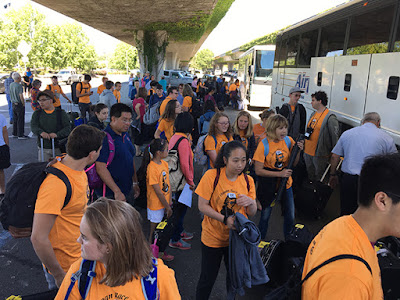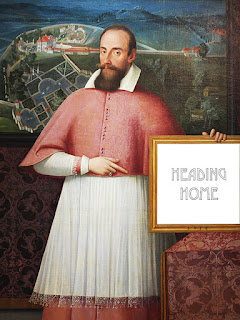 |
A visitor lays flowers on the grave
of Franz Schubert, just outside of Vienna
Photo: Colin Talcroft |
We left Vienna for Budapest on the morning of June 26 with stops on the way at the city’s Central Cemetery and at the Esterhazy Palace, in Eisenstadt. The Vienna cemetery was created in the early 1860s at about the time the city walls came down for construction of the Ringstrasse loop, still one of Vienna’s main thoroughfares. Graves in the way of expansion were moved to the new cemetery, which, despite its name, is on the outskirts of the city. Many famous people are buried there, including some of Western music’s most celebrated names. The SRSYO musicians got to see the graves of Beethoven, Brahms, Schubert, Franz von Suppé, and of Johann Strauss Jr. and his father, among others. Chiara Rackerby (oboe) offered a tribute to the musicians by bringing her oboe along and playing the second movement of Richard Strauss’s
Oboe Concerto over the grave of Johann Strauss Jr.
 |
The Haydn mausoleum at the Haydn Kirche, Eisenstadt
Photo: Colin Talcroft |
Between the cemetery and Eisenstadt, we passed through farmland, most of it wheat and corn, but also vineyards and fields of sunflowers in bloom. Just outside the town, we visited the Eisenstadt Bergkirche (also known as the Haydnkirche, or the Haydn Church), which houses the Haydn Mausoleum, a white marble sarcophagus in the church behind an iron gate. Bizarrely, Haydn’s head was stolen just before his initial burial, ostensibly in the interest of phrenological research, but apparently as a souvenir. It wasn’t until 1954 that Haydn’s skull was finally reunited with the rest of his remains, interred in the Mausoleum. Haydn’s body had been moved to Eisenstadt in 1820 from its initial burial place at the Hundsthurm Cemetery, in Vienna, at the behest of the Esterhazy family in recognition of his long service at Eisenstadt of nearly forty years.
 |
Nick Hidy (French horn) tries out the organ
Haydn once played, just outside Eisenstadt
Photo: Colin Talcroft |
The church itself is of simple design, but Haydn played here. Among the young musicians on tour, Nick Hidy (French horn), intensely interested in organ technique, was invited to play the instrument, finishing up a mini concert with the opening to Richard Strauss’s
Also Sprach Zarathustra to great effect. Yekaterina Lynch (percussion) also had a try on the instrument.
 |
An original Anton Weber pianoforte that
belonged to the Esterhazy family
Photo: Colin Talcroft |
After lunch and a little free time to explore Eisenstadt, the SRSYO reassembled for a tour of the Esterhazy Palace. Highlights included a c. 1730 Anton Weber fortepiano, a look at the Haydnsaal, the main concert hall in the palace, noted for its fine acoustics and for its frescoes, and finally a visit to the palace chapel with another organ that Haydn played—a stop not ordinarily on the guided tour, but offered because we were a group of musicians.
 |
The chapel at the Esterhazy Palace.
Haydn composed on the organ here
Photo: Colin Talcroft |
It was on this organ that Haydn composed his
Nelson Mass. He is said to have once played in the chapel for Lord Nelson and Lady Hamilton. A full skeleton displayed in a glass case, ostensibly saintly remains, attracted a lot of attention and resulted in a line of young musicians waiting to take selfies with the bones. Francis Freenor (double bass) said it was interesting to see so many artifacts from Haydn's time. It was very educational." From the Palace, we headed east toward Hungary, entering Budapest from the Buda side, crossing the Danube (still not blue) into the suburbs of Pest for a buffet dinner with Hungarian music and dancing.







Comments
Post a Comment